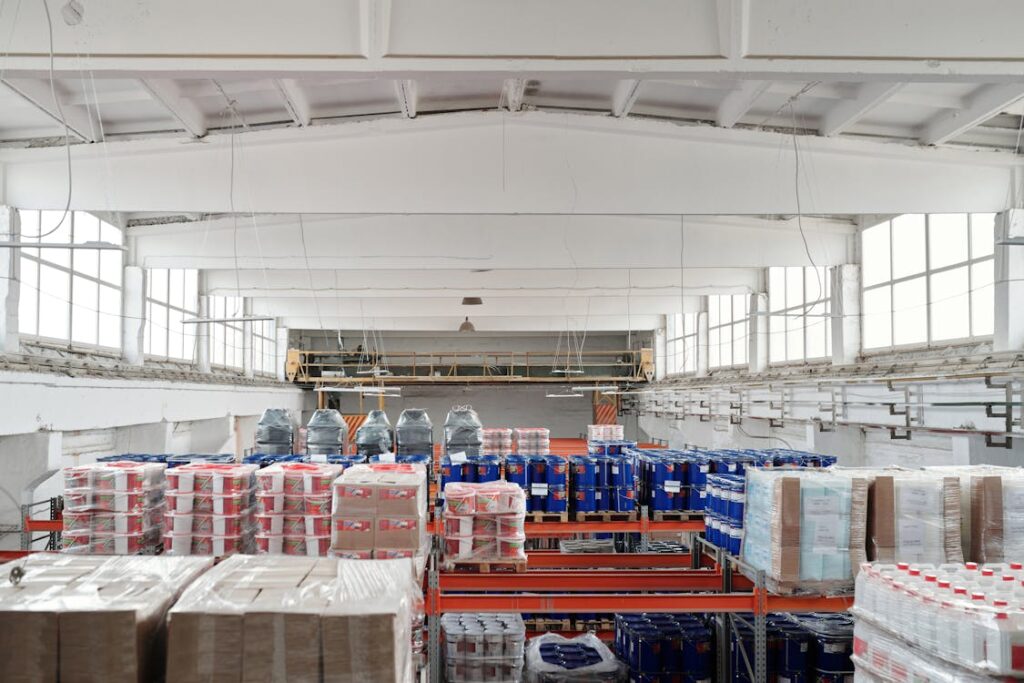Introduction.
In a world increasingly fraught with natural disasters, economic instability, pandemics, and geopolitical tensions, the concept of strategic stockpiling has never been more pertinent. The idea of maintaining a reserve of essential goods and resources is not new; it has been a fundamental aspect of human society for centuries. However, in the 21st century, the importance of effective stockpiling strategies has reached unprecedented levels.
The Concept of Strategic Stockpiling
Strategic stockpiling involves the accumulation and maintenance of essential goods and resources to ensure stability and continuity in times of crisis. This practice can be applied on various scales, from individual households to national governments and international organizations. The primary objective is to mitigate the impact of disruptions, ensuring that societies can withstand and recover from unforeseen events.
Individual and Household Stockpiling
At the individual and household level, stockpiling typically involves the storage of non-perishable food, water, medical supplies, and other necessities. This form of preparedness can be crucial during natural disasters, economic downturns, or pandemics when access to essential goods may be limited. For instance, the COVID-19 pandemic highlighted the importance of having a reserve of medical supplies and personal protective equipment (PPE).
National and Governmental Stockpiling
Governments around the world maintain strategic reserves of various commodities, including food, oil, and medical supplies. These reserves are designed to stabilize markets, provide relief during emergencies, and ensure national security. The United States, for example, has the Strategic Petroleum Reserve (SPR), which holds vast quantities of crude oil to mitigate the impact of oil supply disruptions.
International and Global Stockpiling
International organizations, such as the United Nations and the World Health Organization, also engage in strategic stockpiling. These entities maintain reserves of food, vaccines, and other critical supplies to support humanitarian efforts and global health initiatives. The World Food Programme (WFP) plays a crucial role in responding to food crises by maintaining and distributing emergency food stocks.
Historical Precedents of Stockpiling
The practice of stockpiling dates back to ancient civilizations. Historical records reveal numerous instances where strategic reserves played a pivotal role in the survival and prosperity of societies.
Ancient Egypt
One of the earliest examples of strategic stockpiling can be found in ancient Egypt. During the reign of Pharaoh Joseph, as described in the biblical account, Egypt experienced seven years of plenty followed by seven years of famine. Joseph advised Pharaoh to store surplus grain during the years of abundance, which enabled Egypt to endure the subsequent famine. This foresight not only ensured the survival of the population but also solidified Egypt’s position as a dominant regional power.
World War II
During World War II, nations involved in the conflict recognized the importance of maintaining strategic reserves. The United Kingdom, for example, implemented rationing and established stockpiles of essential goods to sustain the population during wartime shortages. Similarly, the United States developed the National Defense Stockpile (NDS) to secure supplies of critical materials needed for military production.
The Cold War
The Cold War era saw a renewed emphasis on strategic stockpiling, particularly in the context of potential nuclear conflict. Governments stockpiled food, medical supplies, and other essentials in preparation for the possibility of prolonged disruptions. The construction of fallout shelters and the accumulation of civil defense supplies became common practices in many countries.
The Modern Imperative for Stockpiling
In the contemporary world, the need for strategic stockpiling has become even more pronounced. Several factors contribute to this growing imperative:
Globalization and Supply Chain Vulnerabilities
Globalization has created highly interconnected supply chains, which, while efficient, are also vulnerable to disruptions. Natural disasters, geopolitical tensions, and pandemics can all disrupt the flow of goods, leading to shortages and economic instability. The COVID-19 pandemic exposed the fragility of global supply chains, highlighting the need for resilient stockpiling strategies.
Climate Change and Natural Disasters
Climate change is increasing the frequency and severity of natural disasters, including hurricanes, wildfires, floods, and droughts. These events can devastate communities and disrupt the supply of essential goods. Strategic stockpiling can provide a buffer, enabling affected areas to recover more quickly and reducing the strain on emergency response systems.
Public Health Crises
The COVID-19 pandemic underscored the importance of having adequate stockpiles of medical supplies and PPE. Countries with robust strategic reserves were better equipped to manage the crisis, while those without adequate supplies faced severe shortages and increased mortality rates. The lessons learned from the pandemic emphasize the need for ongoing investment in public health preparedness.
Implementing Effective Stockpiling Strategies
Developing and maintaining effective stockpiling strategies requires careful planning, coordination, and investment. Here are some key considerations for implementing successful stockpiling programs:
Identifying Critical Needs
The first step in developing a stockpiling strategy is identifying the critical needs of the population. This involves assessing the types of emergencies most likely to occur and determining which goods and resources are essential for survival and recovery. For example, in regions prone to natural disasters, food, water, and medical supplies may be prioritized, while in areas with significant industrial activity, raw materials and energy resources might be more critical.
Diversifying Stockpiles
Diversification is essential to ensure that stockpiles can address a wide range of potential emergencies. This includes maintaining reserves of food, water, medical supplies, energy resources, and other critical commodities. Diversifying stockpiles also involves considering different forms of storage, such as physical stockpiling, virtual reserves (e.g., financial resources), and strategic partnerships with private sector entities.
Ensuring Accessibility and Distribution
Stockpiles must be easily accessible and capable of being distributed quickly and efficiently. This requires the development of robust logistics and distribution networks, as well as coordination with local, national, and international agencies. Ensuring that stockpiles are strategically located and regularly rotated to prevent spoilage is also crucial.
Investing in Technology and Innovation
Advances in technology and innovation can enhance the effectiveness of stockpiling strategies. For instance, the use of blockchain technology can improve supply chain transparency and traceability, while data analytics can optimize inventory management and demand forecasting. Investing in research and development can also lead to the creation of more durable and efficient storage solutions.
Promoting Public Awareness and Participation
Public awareness and participation are vital components of successful stockpiling strategies. Educating the public about the importance of preparedness and encouraging individual and community-level stockpiling can complement national efforts. Public-private partnerships can also play a crucial role in expanding the reach and impact of stockpiling initiatives.
Case Studies: Successful Stockpiling Initiatives
Examining successful stockpiling initiatives can provide valuable insights and best practices for future efforts. Here are two notable examples:
The United States Strategic National Stockpile (SNS)
The SNS is a critical component of the United States’ public health emergency preparedness. Managed by the Department of Health and Human Services (HHS), the SNS maintains large quantities of medical supplies, pharmaceuticals, and vaccines. During the COVID-19 pandemic, the SNS played a pivotal role in distributing PPE, ventilators, and other essential supplies to states and localities. The SNS’s success underscores the importance of maintaining robust national stockpiles and the need for continuous investment in public health infrastructure.
The European Union Civil Protection Mechanism (EUCPM)
The EUCPM is a comprehensive framework designed to enhance disaster response and preparedness across European Union member states. The mechanism includes a stockpile of emergency response resources, such as medical equipment, shelter supplies, and firefighting assets. The EUCPM facilitates coordination and mutual assistance among member states, ensuring a rapid and effective response to crises. The mechanism’s success highlights the benefits of regional cooperation and shared resources in addressing complex emergencies.
Challenges and Future Directions
While strategic stockpiling offers numerous benefits, it also presents several challenges that must be addressed to ensure its effectiveness:
Funding and Resource Allocation
Maintaining strategic stockpiles requires significant financial investment and resource allocation. Balancing the costs of stockpiling with other public priorities can be challenging, particularly in times of economic uncertainty. Governments and organizations must develop sustainable funding models to support long-term stockpiling efforts.
Managing Perishability and Obsolescence
Many stockpiled goods, such as food and medical supplies, have limited shelf lives and can become obsolete over time. Regular monitoring, rotation, and replenishment are essential to prevent waste and ensure that stockpiles remain viable. Innovative storage solutions and advances in preservation technology can help mitigate these challenges.
Coordinating Multilateral Efforts
Effective stockpiling often requires coordination among multiple stakeholders, including governments, international organizations, and the private sector. Ensuring seamless communication and collaboration can be complex, particularly in the face of geopolitical tensions and competing interests. Building strong partnerships and fostering a culture of cooperation are critical to overcoming these challenges.
Adapting to Emerging Threats
The nature of emergencies is constantly evolving, with new threats emerging regularly. Stockpiling strategies must be adaptable and responsive to changing conditions. This requires ongoing research, risk assessment, and scenario planning to anticipate future challenges and develop proactive solutions.
Conclusion
Strategic stockpiling is a vital component of crisis preparedness and resilience. By maintaining reserves of essential goods and resources, societies can mitigate the impact of disruptions and ensure continuity in times of crisis. Historical precedents and modern case studies demonstrate the importance and effectiveness of stockpiling initiatives. However, successful implementation requires careful planning, coordination, and investment. As the world continues to face complex and evolving threats, strategic stockpiling will remain a crucial tool in safeguarding public health, economic stability, and national security. By embracing innovation, fostering cooperation, and promoting public awareness, we can build a more resilient and prepared global community. Click here to find more.













